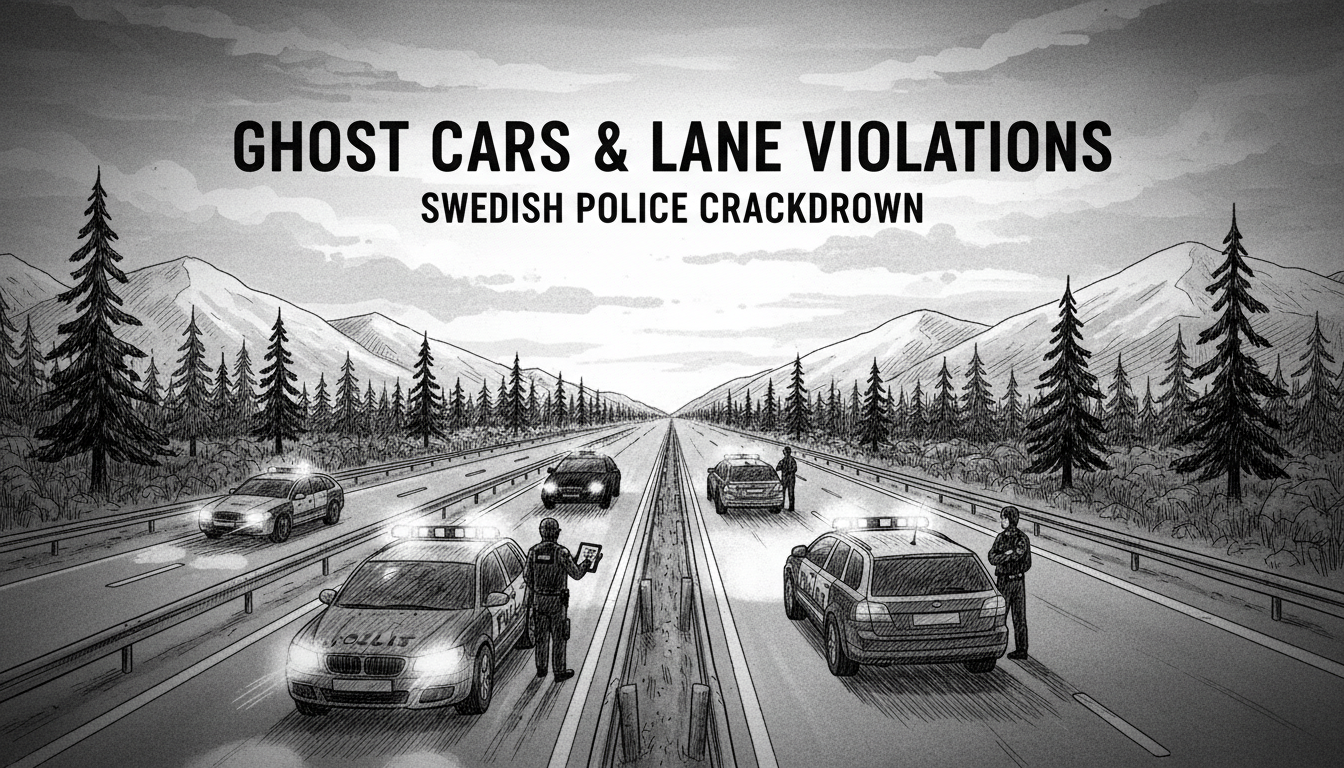Police in western Sweden conducted a major traffic enforcement operation last week. Officers focused on two common violations that create dangerous highway conditions. They targeted so-called ghost cars driving without proper lighting and drivers lingering unnecessarily in left lanes. Approximately twenty motorists received fines during the enhanced enforcement period.
Traffic officer Martin Petersson explained the ghost car phenomenon. Many drivers stopped for driving without lights claimed they didn't realize their lights were off. Some even admitted they didn't know how to operate their vehicle's lighting system. Petersson offered practical advice for drivers. Check your instrument panel to ensure correct lights are illuminated. If uncertain, walk around your vehicle to verify all lights function properly.
Ghost cars present multiple safety hazards. Vehicles without rear lighting become nearly invisible until they brake. Drivers with inadequate forward lighting cannot properly see pedestrians or animals on roadways. These conditions dramatically increase collision risks for all road users.
Left lane violations drew equal police attention. Swedish law requires drivers to stay in the right lane except when passing on roads with speed limits of 80 km/h or higher. Petersson noted many drivers remain unaware of this regulation. Distractions like phone conversations or passenger interactions cause drivers to forget their lane position. Even on empty multi-lane highways, drivers frequently occupy left lanes without passing.
Why does left lane camping matter on empty roads? Petersson explained the traffic flow implications. When another vehicle approaches from behind, the left lane camper blocks passing opportunities since Swedish law prohibits right lane overtaking. This creates unnecessary traffic congestion and driver frustration.
Most stopped drivers displayed ignorance rather than defiance according to police observations. Officers provided traffic law education alongside citations. Some motorists questioned whether police should focus on more serious crimes. Petersson acknowledged these comments while emphasizing road safety priorities.
This enforcement campaign reflects ongoing concerns about basic traffic law awareness in Sweden. Similar operations have occurred across Scandinavian countries where dark winter conditions amplify lighting violations. Norwegian and Danish authorities have reported identical patterns of driver behavior during winter months.
The psychological aspect of lane selection deserves examination. Drivers often develop habitual lane preferences regardless of traffic conditions. Highway design and cultural driving norms influence these patterns across Nordic countries. Swedish drivers generally demonstrate higher lane discipline than many European counterparts, but improvement remains possible.
International readers should note Sweden's strict traffic enforcement culture. The country maintains Vision Zero policy ambitions aiming to eliminate traffic fatalities and serious injuries. Regular enforcement campaigns target specific violation patterns rather than waiting for accidents to occur. This proactive approach represents Scandinavia's preventative safety philosophy.
For expatriates driving in Sweden, understanding left lane rules proves crucial. Many countries permit left lane cruising under certain conditions, but Sweden enforces keep-right exceptions strictly. Vehicle lighting checks become particularly important during Scandinavia's long dark seasons when visibility challenges intensify.
The economic impact of traffic enforcement often goes unmentioned. Fines generate revenue, but prevented accidents save substantial healthcare and insurance costs. Sweden's systematic approach to traffic safety has demonstrated measurable success in reducing serious collisions over decades.
What comes next for Swedish traffic enforcement? Authorities typically rotate focus between different violation types throughout the year. Expect continued emphasis on lighting and lane discipline during winter months when conditions demand heightened driver awareness.

